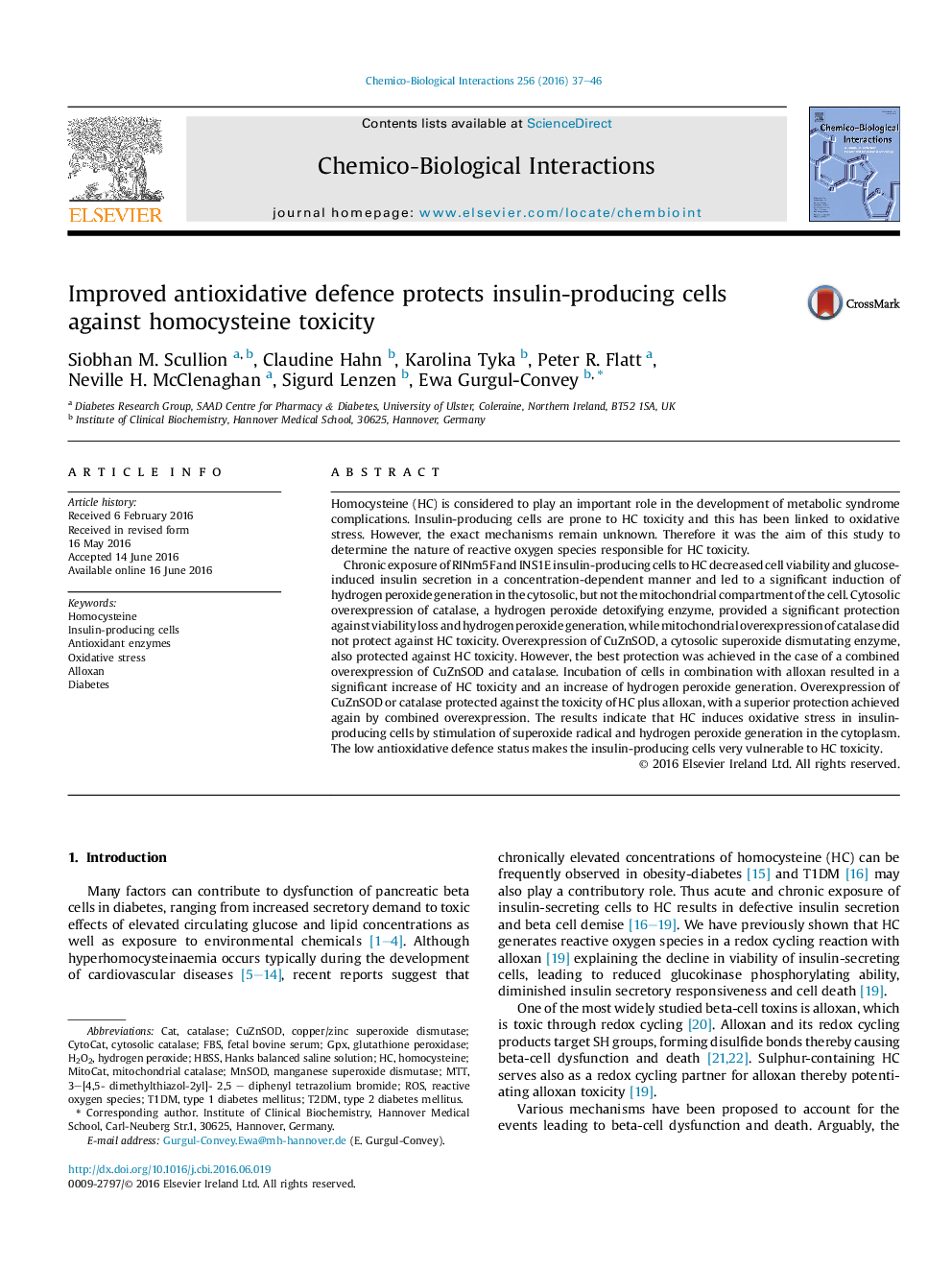| کد مقاله | کد نشریه | سال انتشار | مقاله انگلیسی | نسخه تمام متن |
|---|---|---|---|---|
| 2579876 | 1561585 | 2016 | 10 صفحه PDF | دانلود رایگان |
• Insulin-producing cells are prone to homocysteine (HC) toxicity.
• Chronic exposure to HC induces oxidative stress in the cytosol.
• Cytosolic overexpression of antioxidative enzymes protects against HC toxicity.
• Weak antioxidative defence makes insulin-producing cells vulnerable to HC toxicity.
Homocysteine (HC) is considered to play an important role in the development of metabolic syndrome complications. Insulin-producing cells are prone to HC toxicity and this has been linked to oxidative stress. However, the exact mechanisms remain unknown. Therefore it was the aim of this study to determine the nature of reactive oxygen species responsible for HC toxicity.Chronic exposure of RINm5F and INS1E insulin-producing cells to HC decreased cell viability and glucose-induced insulin secretion in a concentration-dependent manner and led to a significant induction of hydrogen peroxide generation in the cytosolic, but not the mitochondrial compartment of the cell. Cytosolic overexpression of catalase, a hydrogen peroxide detoxifying enzyme, provided a significant protection against viability loss and hydrogen peroxide generation, while mitochondrial overexpression of catalase did not protect against HC toxicity. Overexpression of CuZnSOD, a cytosolic superoxide dismutating enzyme, also protected against HC toxicity. However, the best protection was achieved in the case of a combined overexpression of CuZnSOD and catalase. Incubation of cells in combination with alloxan resulted in a significant increase of HC toxicity and an increase of hydrogen peroxide generation. Overexpression of CuZnSOD or catalase protected against the toxicity of HC plus alloxan, with a superior protection achieved again by combined overexpression. The results indicate that HC induces oxidative stress in insulin-producing cells by stimulation of superoxide radical and hydrogen peroxide generation in the cytoplasm. The low antioxidative defence status makes the insulin-producing cells very vulnerable to HC toxicity.
Journal: Chemico-Biological Interactions - Volume 256, 25 August 2016, Pages 37–46
